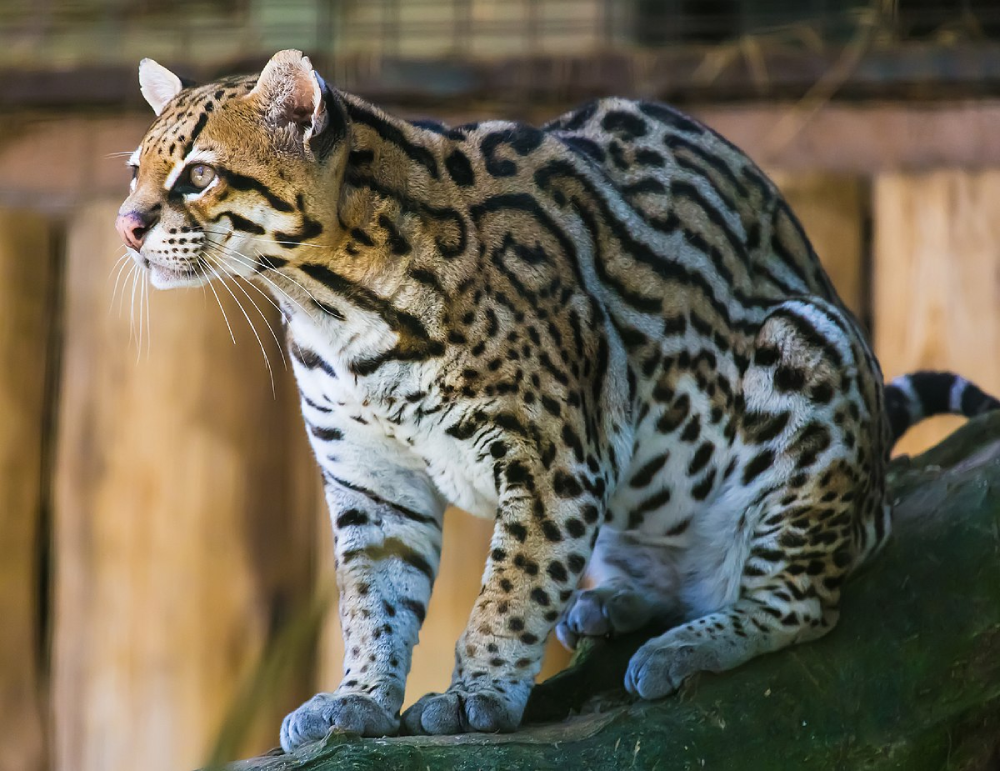Physical Appearance and Characteristics
The ocelot (Leopardus pardalis) is a medium-sized wild cat native to the Americas, ranging from southern Texas to northern Argentina. It belongs to the genus Leopardus, which also includes other small wild cats such as the margay and the oncilla. The ocelot has a beautiful fur pattern, which consists of solid black rosettes and spots against a background of tawny or grayish fur. This coat provides excellent camouflage in its forest habitat, allowing the ocelot to blend seamlessly into the dappled sunlight and shadows of the jungle understory.
One of the most striking features of the ocelot is its expressive face, marked by large, round eyes and distinctive facial markings. Its eyes are usually amber or brown in color, with vertical pupils that dilate to adapt to different light conditions. This keen sense of sight, combined with acute hearing and a highly developed sense of smell, makes the ocelot an efficient and formidable hunter in its natural environment.

Habitat and Distribution
Ocelots inhabit a variety of forested habitats, including tropical rainforests, mangrove swamps, and scrublands. They are primarily found in Central and South America, with populations also present in southern Texas and parts of Arizona. Within their range, ocelots occupy a diverse array of ecosystems, from lowland jungles to mountainous regions.
Despite their wide distribution, ocelot populations have experienced significant declines in recent decades due to habitat loss, poaching, and fragmentation of their natural habitats. Deforestation, in particular, poses a grave threat to these elusive cats, as it reduces their available hunting grounds and isolates populations, making it difficult for them to find mates and maintain genetic diversity.
Behavior and Ecology
Ocelots are solitary and territorial animals, with each individual occupying a home range that can vary in size depending on factors such as habitat quality and prey availability. These home ranges are marked with scent markings, vocalizations, and visual signals to deter intruders and communicate with potential mates.
As primarily nocturnal hunters, ocelots spend much of their days resting in dense vegetation or rocky outcrops, emerging at dusk to begin their hunt. Their diet consists mainly of small to medium-sized mammals, such as rodents, rabbits, and small primates, although they may also prey on birds, reptiles, and fish. With their sharp claws and powerful jaws, ocelots are good predators capable of taking down prey larger than themselves.
Despite their solitary nature, ocelots may occasionally come together for mating purposes, with breeding typically occurring throughout the year. After a gestation period of around 70 days, females give birth to a litter of one to three kittens in a secluded den. The mother cares for her offspring with utmost dedication, nursing them and teaching them essential hunting skills until they are old enough to fend for themselves.
Conservation Status and Threats
The conservation status of the ocelot varies across its range, with some populations classified as endangered or critically endangered. The primary threats to ocelot populations include habitat loss and fragmentation, illegal hunting for their fur, and conflicts with humans over livestock predation. In regions where ocelots come into contact with human settlements, they may also fall victim to road accidents and retaliatory killings by farmers seeking to protect their livestock.
Efforts to conserve ocelot populations include habitat preservation, restoration of degraded ecosystems, and the establishment of protected areas where hunting and habitat destruction are strictly regulated. Additionally, initiatives aimed at reducing human-wildlife conflicts through community engagement and education play a crucial role in ensuring the long-term survival of these magnificent cats.
Conclusion
In the heart of the jungle, where sunlight filters through the dense canopy and shadows dance among the trees, the ocelot reigns as a symbol of the wild and untamed. With its striking appearance, elusive behavior, and essential role in maintaining the balance of its ecosystem, this enigmatic feline continues to inspire awe and reverence among those fortunate enough to encounter it in its natural habitat. As we strive to protect the world’s biodiversity for future generations, let us not forget the importance of safeguarding creatures like the ocelot, whose presence enriches our planet in ways both tangible and profound.









